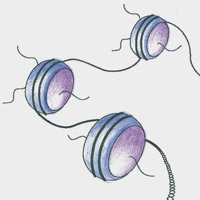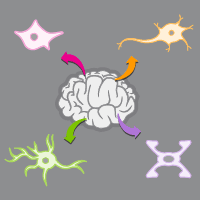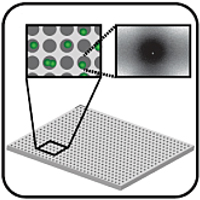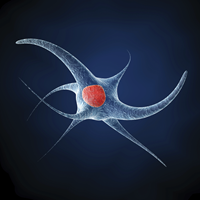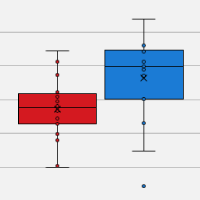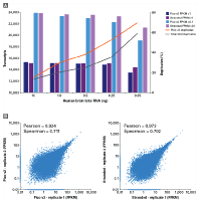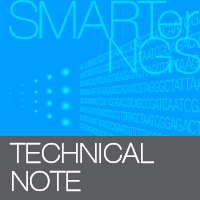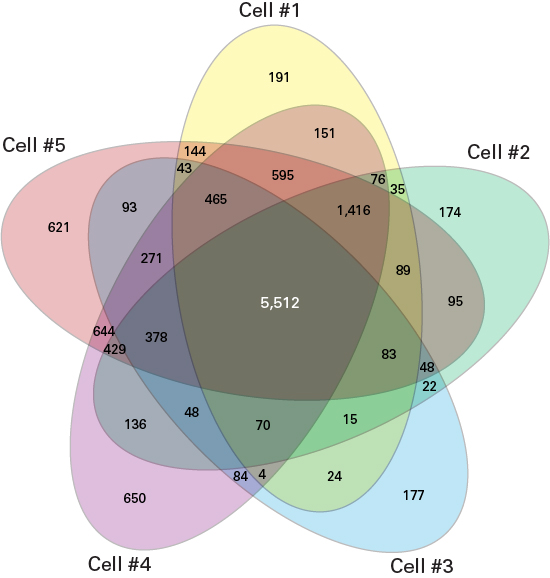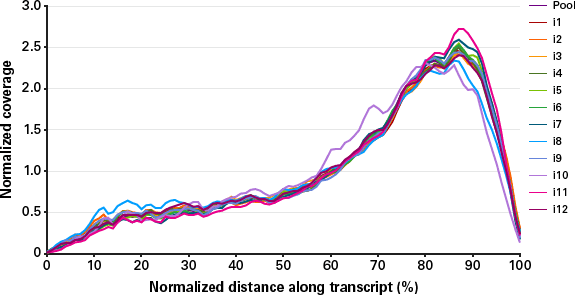Top 5 tips for sorting (FACS) upstream of single-cell RNA-seq experiments

Getting high-quality scRNA-seq data depends on the ability to quickly and carefully capture single, live cells to prevent RNA degradation prior to library prep. Successful sorting is tricky, requiring some careful planning and optimization of FACS techniques. Here is a list of tips to help you avoid common problems, including recommendations on collection parameters that maximize sample quality upstream of our most popular library prep kits.
Don't clog the sorter
Nothing is worse than a clogged flow cytometer! It can slow down sorting and compromise your samples. Therefore, you should ensure your single-cell suspension is free of cell debris and clumps by removing them using centrifugation, cell strainers, or other methods. Optimize your dissociation technique to maximize the number of single cells without compromising cell viability. As magnesium and calcium are required by many adhesion molecules, we recommend suspending bulk cell suspensions in cold, filtered 1X PBS (without EDTA, Mg2+, and Ca2+, and supplemented with 1–2% BSA) or BD FACS Pre-Sort Buffer (Cat. # 563503), which already contains a serum protein that can help maintain viability. Counterintuitively, sorting cells suspended in media can threaten viability (Kissner 2015) and often inhibits cDNA synthesis. We strongly recommend using a viability stain prior to sorting to maximize the capture of live single cells.
Treat the cells gently
FACS is rough on cells, but there are things you can do to minimize cell damage and lysis during sorting. In addition to following the pre-sort buffer guidelines in Tip #1, we recommend using large nozzle sizes and slower flow velocities, especially for fragile cell types. Work with your flow cytometry core facility or instrument manufacturer to find the appropriate settings for your sorter. Finally, sorting rare cell types, especially at low flow velocities, can be time-consuming. Therefore, you may want to consider using a pre-enrichment step before FACS or a two-step sorting strategy.
Sort into the bottom of the wells
This seems straightforward, but it is a common problem. Ensure your flow sorter is calibrated to deposit droplets containing cells into the bottom of the wells of your plate/tube strip(s). If your plate/strip(s) are not aligned appropriately, cells may end up on the side of the wells, where they will quickly dehydrate, risking RNA degradation. Even worse, the cells may not end up in the wells at all. Work with your flow cytometry core facility or instrument manufacturer to calibrate your sorter. You may also want to read up how some researchers have developed quality control methods using fluorescent beads (Zigon et al. 2018), reporters (Rodrigues and Monard 2016), or even Litmus paper (Baumgartner et al. 2014) to ensure droplets are delivered appropriately.
Sort into lysis buffer
Once the cells have been sorted, the transcriptome should be stabilized as quickly as possible. Thus, we recommend sorting into cold, fresh lysis buffer containing RNase inhibitor. Once cells have been deposited into plates/tube strips, they should be gently centrifuged at 100g for 15–30 sec. If not proceeding immediately to cDNA synthesis, place the samples on dry ice to flash-freeze and store at –80°C for up to several weeks. These steps ensure sorted cells are in the lysis buffer (as droplets can sometimes ricochet), where they can lyse in the presence of RNase inhibitor. See the table below for recommendations tailored to our single-cell RNA-seq kits.
| Kit | Recommended FACS collection buffer | Volume per well | Contains |
|---|---|---|---|
| SMART-Seq HT Kit | CDS Sorting Solution | 12.5 µl | Lysis buffer, RNase inhibitor, and CDS primer |
| SMART-Seq Stranded Kit | 1.25X Lysis Buffer Mix | 8.0 µl | Lysis buffer and RNase inhibitor |
| SMART-Seq v4 kits | 1X Reaction Buffer | 11.5 µl | Lysis buffer and RNase inhibitor |
Table I. Recommended FACS collection parameters for SMART-Seq kits. Exact buffer recipes are included in the relevant user manuals.
Ask for help
FACS is complicated, and every sorter is different. Reach out to your flow cytometry core facility or instrument manufacturer before you start your experiment. These experts can help you get your experiment right.
Happy sorting!
Takara Bio has pioneered and systematically advanced single-cell RNA-seq technology for years, and we are committed to helping advance your research. Please check out our single-cell RNA-seq kits to find the right one for your application, including oligo(dT) and random-priming solutions.
References
Baumgartner, T. et al. "Direct visual confirmation of sort material deposition alignment at the bottom of 96‐ and 384‐well PCR plate wells." Poster presented at the XXIX Congress of the International Society for Advancement of Cytometry, Ft. Lauderdale, FL, May 2014.
Kissner. How Cell Culture Medium Can Decrease Cell Viability During A Flow Cytometry Cell Sorting Experiment. Expert Cytom. (2015). at <https://expertcytometry.com/how-cell-culture-medium-can-decrease-cell-viability-during-a-flow-cytometry-cell-sorting-experiment/>
Rodrigues, O. R. & Monard, S. A rapid method to verify single-cell deposition setup for cell sorters. Cytom. Part A 89, 594–600 (2016).
Zigon, E. S. et al. A rapid single cell sorting verification method using plate-based image cytometry. Cytom. Part A 93, 1060–1065 (2018).
Single-cell RNA-seq blog articles
Bringing epigenomic profiling to the single-cell biology stage
Discover how researchers developed the new CUT&Tag method for single-cell profiling of chromatin components with ICELL8 technology.
Using the power of RNA-seq to characterize brain cell types
Learn more about how the Allen Institute for Brain Science used our SMART-Seq v4 Ultra Low Input Kit for Sequencing to characterize specific cell types within human brain.
Accelerating chromatin mapping with single-cell ATAC-seq
Learn more about how researchers used our ICELL8 Single-Cell System to develop a novel single-cell ATAC-seq workflow.
5 tips to make your single-cell RNA-seq experiments a success
Single-cell RNA-seq can be tricky. Check out our tips to get the most out of your experiment.
Plate-based single-cell RNA-seq technical notes
Unprecedented sensitivity with the SMART-Seq Single Cell Kit
View data on the SMART-Seq Single Cell Kit's superior sensitivity and reproducibility for single-cell and nuclei applications.
High-quality stranded RNA-seq libraries from single cells using the SMART-Seq Stranded Kit
High-quality, full-length RNA-seq libraries from single-cells with strand-of-origin information.
Streamlined single-cell mRNA-seq (SMART-Seq HT)
The simplified workflow of the SMART-Seq HT Kit is extremely fast, convenient, and generates a high cDNA yield, all while providing unparalleled sensitivity and reproducibility.
Single-cell transcriptome studies: a powerful way to highlight subtle differences between cells that may be hidden in a population
The SMART-Seq v4 Ultra Low Input RNA Kit for Sequencing provides industry-leading performance for single-cell RNA-seq.
Differential expression from single cells using the SMART-Seq v4 3' DE Kit
RNA-seq data that focuses on transcript 3' ends for differential expression analysis.
Takara Bio USA, Inc.
United States/Canada: +1.800.662.2566 • Asia Pacific: +1.650.919.7300 • Europe: +33.(0)1.3904.6880 • Japan: +81.(0)77.565.6999
FOR RESEARCH USE ONLY. NOT FOR USE IN DIAGNOSTIC PROCEDURES. © 2025 Takara Bio Inc. All Rights Reserved. All trademarks are the property of Takara Bio Inc. or its affiliate(s) in the U.S. and/or other countries or their respective owners. Certain trademarks may not be registered in all jurisdictions. Additional product, intellectual property, and restricted use information is available at takarabio.com.




